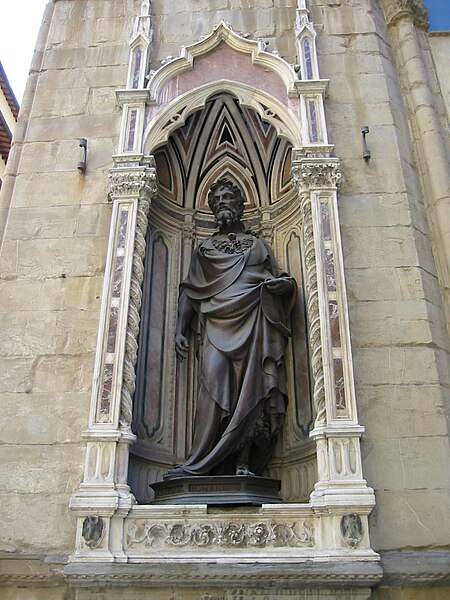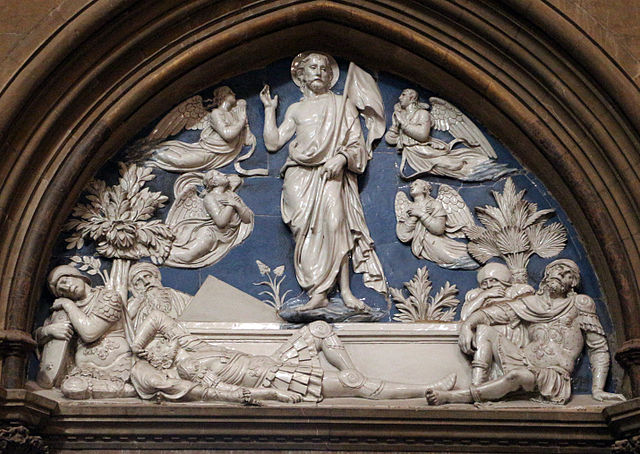Lorenzo Ghiberti, born Lorenzo di Bartolo, was an Italian Renaissance sculptor from Florence, a key figure in the Early Renaissance, best known as the creator of two sets of bronze doors of the Florence Baptistery, the later one called by Michelangelo the Gates of Paradise. Trained as a goldsmith and sculptor, he established an important workshop for sculpture in metal. His book of Commentarii contains important writing on art, as well as what may be the earliest surviving autobiography by any artist.
Ghiberti's first door from the North side of the Baptistry now in the Museo dell'Opera del Duomo
The copy of the Doors of Paradise on the East side of the Baptistry
In Flagellation, one of the panels on the North Doors
St. John the Baptist
Italian Renaissance sculpture
Italian Renaissance sculpture was an important part of the art of the Italian Renaissance, in the early stages arguably representing the leading edge. The example of Ancient Roman sculpture hung very heavily over it, both in terms of style and the uses to which sculpture was put. In complete contrast to painting, there were many surviving Roman sculptures around Italy, above all in Rome, and new ones were being excavated all the time, and keenly collected. Apart from a handful of major figures, especially Michelangelo and Donatello, it is today less well-known than Italian Renaissance painting, but this was not the case at the time.

Painting of the Piazza della Signoria and Loggia dei Lanzi in Florence, 1830, Carlo Canella. From left, Fountain of Neptune, Rape of the Sabine by Giambologna, David by Michelangelo, one of the Medici Lions, Perseus with the Head of Medusa by Benvenuto Cellini, hiding Hercules and Cacus by Baccio Bandinelli. Away from the loggia wall, the Medici Pasquino Group, copying an ancient Roman subject.
Francesco Laurana, A Princess of the House of Aragon, c. 1475
Michelangelo's Pietà, completed in 1499.
Luca della Robbia, Resurrection, glazed terracotta, 1445.








